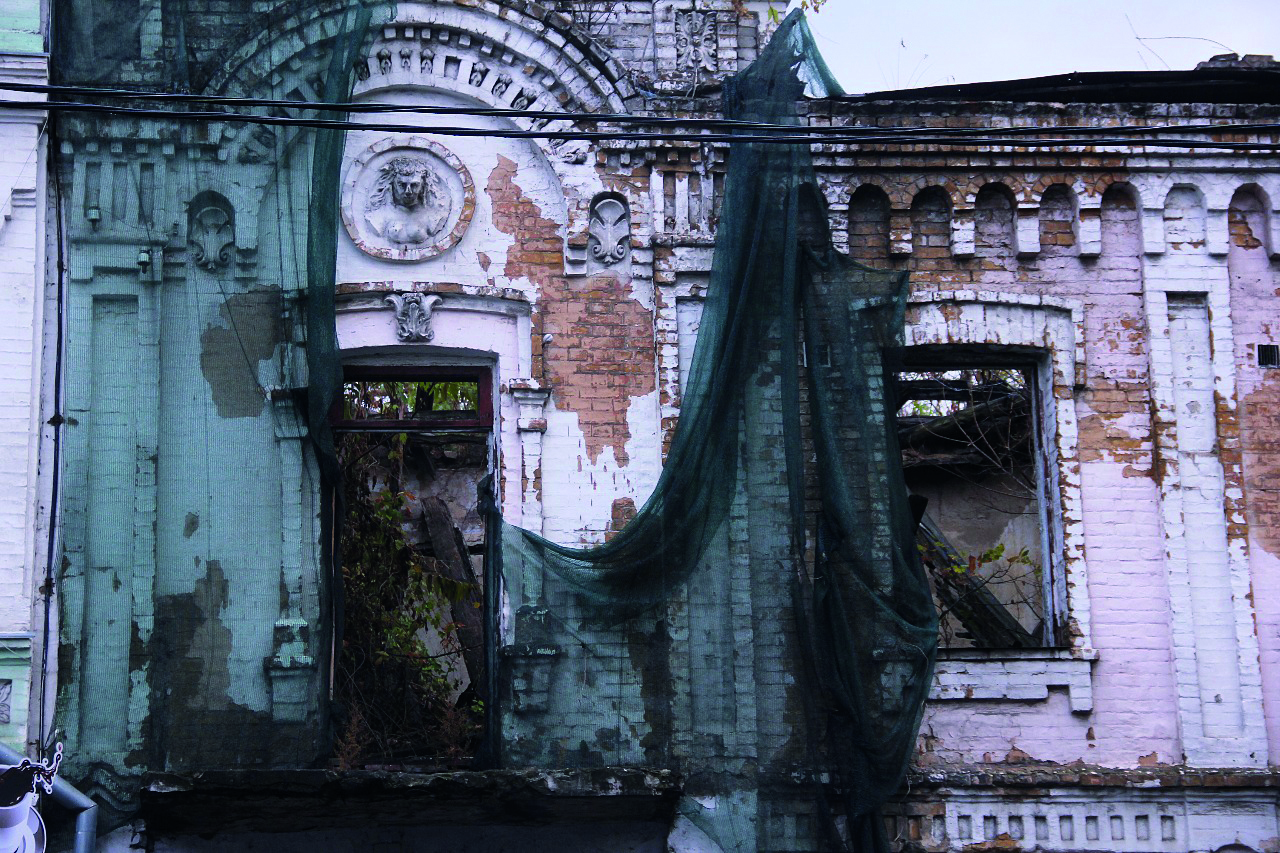A Life up in Smoke

Death and taxes – they are often cited as the only inevitabilities in life. We accept the taxes, but our own mortality? Not so much.
Though most of us dismiss it, the thought of the ultimate inevitability can cause confusion and, for some perhaps, the realisation of the importance of a life lived well. Whether we like it or not, there is an end game for us all. Death is part of any living organism, like birth, and our demise plays one of the most important roles in our fate. Think of it as mathematical and pre-ordained: what goes up, must come down; what begins, must end. Four score years and 10 in mathematics (and a Biblical sense), some of us are lucky to get this allotted amount, while other get less. The outcome, however, is the same. While perhaps an odd story for summer, Ukrainians are more and more eschewing traditional burial for cremation. What’s On looks at why.
 The Final Chapter
The Final Chapter
Death provokes fear and comfort in various degrees, and these emotions are inherent to every human being. According to psychologists, people are not so much afraid of death, as of loss. The loss of things they value in themselves and what they value in others in their lives.
Regardless, all of us go differently, depending on our beliefs or faith. Some prepare at length: making a will and collecting and dividing assets, travelling and spending time with relatives, living full lives and trying to build some kind of legacy. The troubled choose an easier route: they decide, rather than let it be decided for them. Let’s, for a moment, remove the existential elements from the questions no one talks about aloud and discuss the practical and rational aspects of death, about the realities and responsibilities of the living after we leave this mortal coil.
Here in Ukraine, and certainly elsewhere, there are three traditional ways of disposing of the physical body after death: inhumation, cremation, and aerial burial. According to Olha Bozhko, Head of the Public Services Division of the Territorial and Municipal Development Department of the Ministry of Regional Development, Ukrainians are being more and more inclined to cremation. Here in the capital throughout 2017, more than 61% of deceased were cremated. It is notable that while this tendency is more prominent in larger cities – Ukraine has only three crematoriums, located in Kharkov, Odesa and Kyiv – the reality is that more and more people from outside of these metropolises are looking into this less traditional way of disposal.
 You Can’t Rest Here
You Can’t Rest Here
Despite the fact that there are more than 33 000 cemeteries in the country, the lack of space for burial is becoming more and more acute. The shortage, the overcrowding, and the high price of funerals compel Ukrainians to seek an alternative to the traditional burial six feet under. Although Ukrainian law provides for a free place in a cemetery, the reality is that the cost starts from 10 000 – 12 000 UAH. That number looks more like 6 000 – 8000 USD in large cities, and that’s without the cost of funeral services. The price of cremation, on the other hand, is approximately 2 000 UAH.
“Cremation allows relatives to get around problems of space in a cemetery and not have to spend large financial resources,” says psychologist Marina Didenko. “At the same time, inhumation is a tradition that has been observed due to tradition in many respects. It helps kinfolk go through the grief process. It’s what their ancestors did, it’s what they know, and therefore seems ‘proper’. The death of a person is a great stress, but the tradition of committing a body to the ground and their associated rituals, such as rites and wake ceremonies, help the living cope with loss. Before death, people mentally shift the focus of their responsibility to the funeral custom and how they want to go. They may also employ a religious approach, as evidenced by the growing religiosity among the elderly and terminally ill. In Ukraine, Christianity does not forbid cremation, though it also does not recommend it.”

Decline
It is important to mention that the country holds fourth place in the world for mortality, and fifth for natural population decline. This is no minor reality; something the Ministry of Justice confirms with more than a half a million dead in 2016.
In order to solve the problem of space shortages in cemeteries, the Cabinet of Ministers in late April of this year submitted a bill to the Verkhovna Rada that introduced the notion of bio-burial, expanding the use of cremation. Bio-burial is a kind of funeral which, using special materials that decompose in the ground within five years, is a method that does not damage the environment and allows people to be buried not only in a cemetery or crypt, but also in special squares or parks. In addition, the bill provides the possibility of adding seeds of plants to ashes in the urn. After the cremation and burial of the urn in the ground, a tree or another plant marks the place of the departed.
 Awareness
Awareness
Psychologist Anna Antofiychuk says that the tendency to move more toward cremation is related to a growing awareness of the process of body decomposition after ground burial. For some, this sparks not only fear, but also a degree of shock. The idea of being eaten by worms, moulding, and rotting away repels many from the idea of a coffin. While tradition ensured burial as the most common method of disposal, the country is becoming more and more enticed by poetic stories about the scattering of ashes at sea or on land. At the same time, a tree out grown of the departed allows relatives the opportunity to physically visit a space, taking care of the living organism that has appeared in his or her place. Thus, some connection is maintained.
In order to solve the problem of space shortages in cemeteries, the Cabinet of Ministers in late April of this year submitted a bill to the Verkhovna Rada that introduced the notion of bio-burial, expanding the use of cremation
The Last Decision
While cremation in Ukraine is only just catching on, it’s quite common in the rest of the world. Asian countries lead in terms of numbers, which may be due to the dominant religion of Buddhism, Hinduism or Sikhism. Each of these welcome the practice. In fact, Buddha himself was cremated. Japan leads the pack with 99% of people opting for cremation over burial. Countries where Roman Catholicism is most practiced, such as Italy, Ireland, and Poland, have the lowest rates.
Bio-burial
Though burial, storage in tombs, and cremation are more common, natural burials have been practiced in various parts for centuries, and with the world catching on to more eco-friendly trends, this form of disposal is becoming more and more popular worldwide. More recently, British surgeon Francis Seymour Haden, in the mid-1860s, was a strong advocate of burial or cremation, and instead promoted what he called earth-to-earth burial in a coffin of papier mâché. Today, there are many methods and materials that may be used to encase the body for a more environmentally-friendly disposal option, such as wicker, bamboo, seagrass, or banana leaves. Chemicals used in traditional embalming practices are replaced by essential oils and/or resins.











